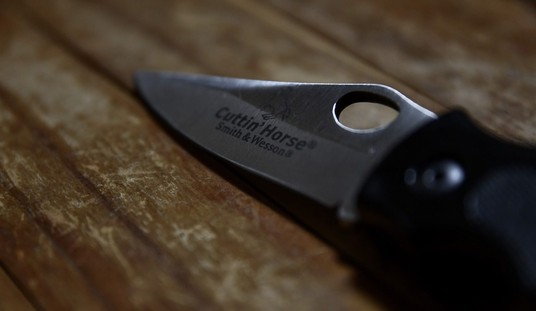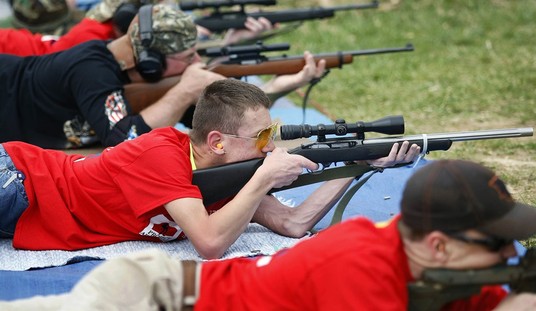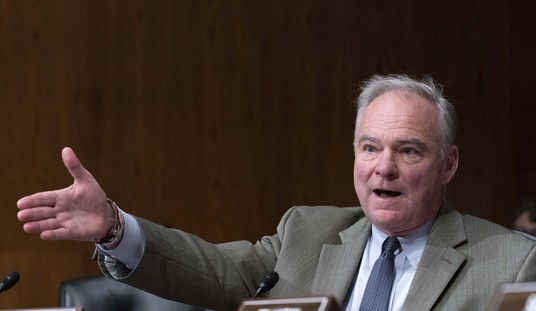[This article originally appeared in Infantry magazine.]
The Army has learned valuable lessons over the past 10 years of war, particularly with respect to small unit leadership. The conflicts in Iraq and Afghanistan have been fought primarily by platoons and squads operating independently from higher headquarters, where the decisions made by their leaders have had both operational and strategic-level impacts. The Army has identified that this new, complex environment requires increasingly adaptive leaders. A primary concern is how best to prepare leaders for this environment prior to their arrival in theater and, further, how to maintain the capabilities of our experienced small unit leaders when the current conflict comes to a close. The Army has refined its doctrine and its learning model based on lessons learned from the past 10 years as well as assumptions about future combat.
The Army has also identified a necessary focus area — the Squad: Foundation of the Decisive Force (SFDF) initiative. The Army’s plan to generate overmatch against its adversaries at the squad echelon is highly techno-centric. Each of the plan’s six dimensions, including education/training, focuses on technology. While these initiatives will prove beneficial to the Infantry squad, as Napoleon said, “The moral is to the material as three is to one,” and the real source of combat power for the squad will be found in the human dimension. Former Maneuver Center of Excellence Commanding General MG Robert Brown identified this in 2011 stating, “When we began we thought most of the improvements would be mostly materiel systems… What we found, though, is that most of the change is needed in the human dimension — training and leader development.”1
Fortunately, the Army has a low-cost, pre-existing program directly geared toward the human dimension and toward increasing the combat power of squads and platoons — the U.S. Army Ranger School. As the Army’s understanding of the future of warfare, leadership, and training has evolved, the Army’s premier leadership course has evolved as well. Ranger School is positioned to be the decisive operation in the effort to gain squad overmatch. This article highlights the refinements that the Ranger Training Brigade (RTB) has made to accomplish this mission.
Background
In existence for more than 60 years, the U.S. Army Ranger School has produced the world’s best small unit combat leaders with the goal of sending these leaders out into the Army to make the force, as a whole, more proficient. Commanders have been able to expect three things of a Ranger graduate:
- He is mentally and physically tough;
- He is tactically proficient; and
- He can lead Soldiers in the harshest and most strenuous conditions.
Approach
The refinements to the course required careful design. Simply imitating common scenarios from the contemporary operating environment would not be enough and, in fact, could infringe upon the unique benefits of Ranger School. Here, we do not teach tactics, techniques, and procedures (TTPs), nor do we train Soldiers for specific environments; these are best left to unit and pre-deployment training. In the Ranger course, we teach combat leadership. Ranger School focuses on the fundamentals that are common to all environments, in all types of combat, in order to provide the student with the tools upon which he will consistently rely. We also endeavor to present the students with unfamiliar conditions — something they have never experienced — in order to train them to apply the fundamentals when faced with the unknown. Focusing too heavily on the contemporary operating environment would negate these benefits and prepare students only to “fight the last war” rather than any war. Also, a key concern was to maintain the physical/psychological rigor and ensure that students had a firm grasp of tactics, which we primarily measure by applying the principles of patrolling.
With these constraints in mind, the RTB initiated a major course modification with two primary initiatives:
- Implementing sprint/marathon missions and
- Incorporating Adaptive Soldier and Leader Training and Education (ASLTE) into both the instruction and grading procedures.
The changes to the course have occurred on differing timelines and with differing emphasis within the RTB due to the varied missions of the three Ranger Training Battalions (RTBns). The progression of the students through the 4th, 5th, and 6th RTBns follows the “crawl, walk, run” model. The 4th RTBn trains leaders on the fundamentals of squad-level tactics at Fort Benning, Ga. In this phase, the Ranger instructors (RIs) are much more directive and focus on students learning the fundamentals to standard. The 5th RTBn in North Georgia trains mountaineering skills and introduces students to platoon-level operations. This phase must move the student’s mindset beyond the mental processes used during the first phase at Fort Benning and, accordingly, students are evaluated primarily by the outcomes of their actions. Instructors in this phase transition from a directive method of instruction to one of facilitating education. The 6th RTBn conducts platoon-level operations in the swamps of Florida. This is the “run” phase in which RIs transition from facilitating to a more observational approach. At this point, students are expected to be proficient and demonstrate their ability to adjust to novel and changing conditions. Due to their differing roles, the approach of each battalion with respect to these two initiatives varies; however, the battalions are nested and the approaches work with the sequence of the course program of instruction (POI) to facilitate the student’s development as he progresses through each phase.
Sprint/Marathon Concept
It is no secret that every Soldier arrives at Ranger School with a general idea of what it will entail. Stories have been told, books have been written, and field training exercises follow a similar format for much of the course. We label this familiar format the “marathon” patrol. During a typical marathon patrol, students conduct the troop leading procedures (TLPs) in a secure patrol base, execute an extended movement to the objective, and then conduct actions on the objective (usually either an ambush or raid), followed by another movement and establishment of a patrol base to conduct priorities of work. Typically, there are chance contacts or other minor events en route, but the patrol is characterized by very deliberate planning (in accordance with the Ranger School standard) and physically strenuous movement, with one main tactical objective. Marathon patrols allow instructors to easily evaluate the performance of a student via a step-by-step process. This style of patrol reinforces the fundamentals of small unit patrolling and provides students with the opportunity to conduct detailed planning and then execute that plan. The patrols also allow for repetition of the full TLPs and a thorough understanding of them, which is critical for small unit leaders. The physical rigors of this style of patrol also reinforce the students’ resiliency.
The most prevalent negative aspect of this type of training, however, is its predictability. Students can generally anticipate when they will make contact with the enemy because of the similar format (though sleep deprivation can hinder this process). On these patrols, no unexpected event is significant enough to force students to deviate significantly from the plans they developed. The long movements and standard format have resulted in an endurance-focused event, with a student mindset of “one foot in front of the other.” Some simply trudge forward in an effort to make it through the patrol rather than treating the mission as they would in combat.
To counter the negative aspects of this type of patrol, our cadre developed the “sprint” patrol concept. During these patrols, Ranger students experience more than six major events in a 24-hour period, most of which are unexpected. Whereas the focus of the marathon mission is training the deliberate TLP process, the focus of the sprint mission is to adjust and apply the process in a time-constrained condition. Sprint patrols are characterized by intelligence-driven scenarios that alter the planned mission in order to test a Ranger student’s ability to make decisions, utilize critical thinking, and adapt to a dynamic situation. Sprint missions do not have a typical format. Ranger students might begin the day planning for a deliberate mission and then step out of the patrol base only to receive a fragmentary order (FRAGO) completely changing the entire patrol. They would then be expected to conduct an abbreviated mission analysis, followed by rapid execution of that plan. Another example would be a patrol encountering an enemy force during movement to its planned objective, and in the destruction of that force, acquire intelligence that requires the patrol leader to alter his original plan. The intent is that students determine the necessary planning and execution in a five-minute or 30-minute time period, rather than a typical three-hour period. Sprint missions require adjusting the total distance covered on a patrol but with no loss of difficulty as the mental stress on students is increased. The end state is that students must exercise adaptability and initiative in order to react to unpredictable situations.
Because each type of patrol has benefits, the RTB maintains both in a set ratio, though not a set battle rhythm (this is determined by the various RTBns and their RI companies). After conducting several pilot classes in early 2012, the RTB commander approved the concept. The implementation has done much to eliminate the “checklist mentality” that many students bring to the course. Previously, their focus was on accomplishing each step of the process in an exact fashion and order. Students’ performance and capability suffered as they worried more about “checking the blocks” during their patrols and became overly concerned with the process rather than the outcome of their actions. The sprint missions have forced students to modify that checklist in accordance with their analysis of the mission, enemy forces, time, terrain-troops available, and civil considerations (METT-TC), thus appropriately applying the fundamentals they have been taught, rather than attempting to rigidly apply a predetermined format to varying situations.
Incorporation of Adaptive Soldier and Leader Training into the POI
The sprint/marathon concept was the catalyst for the second initiative — incorporating ASLTE into the Ranger School POI. The Ranger course is first and foremost a leadership course. We have typically used patrolling as the vehicle to evaluate leadership. As we began to implement the sprint/marathon concept, we asked ourselves if our grading format for the field training exercises — the observation report (OR) — was the best tool to evaluate these types of missions and, more importantly, to inculcate the qualities we require of a Ranger graduate. It became clear that our grading format applied more to patrolling than leadership. As we continued to update our instruction in alignment with ALM 2015, we discovered that it provided tools for evaluating leadership in a more direct manner.
During the development of the sprint concept, we focused on the 21st century leader competencies outlined in ALM 2015. Some of these were applicable to our course, others were not. We identified those we believed we could train and then refined them. We developed measures of performance for these competencies and then began working on a process for evaluating them. Our most significant unanswered questions from the implementation of the sprint concept were: “How do we better evaluate the intangible competencies?” and “How do we train our instructors to do so?” Again, our intent was to grade leadership more directly and focus on the outcomes of the students’ actions. Through working groups of RIs, a revised OR format was created and then modified and refined over a period of six months and multiple test classes. The end result is currently being implemented. The previous OR format was solely a task/condition/standard (T/C/S) approach that focused on inputs rather than outcomes, consisted of a series of checklists for each tactical task, and relied on a mathematical formula for determining percentages and passing rates. The new format is narrative-based, better facilitates counseling, provides a more holistic assessment of the student, focuses more directly on leadership, and allows the RI much greater flexibility. It is designed to progress from general assessment down to more detailed levels as necessary. The leader competencies we identified are the basis for the leadership evaluation, and the principles of patrolling are the basis for the tactical evaluation. The primary focus is the patrol summary and the assessment of the students’ strengths and weaknesses, but we also retained an Army Training and Evaluation Program (ARTEP)-type reference to which the instructor can tie his tactical assessment. The revised evaluation is a hybrid of the T/C/S and the outcomes-based training approach.
The most significant foothold for implementation was to familiarize and train the RIs, an ongoing effort as we incorporate ASLTE into our combat techniques training and improve the presentation of instruction to the students. ASLTE and the new evaluation form have now been incorporated into the certification process, and all RIs have received training, counseling, and mentoring, ultimately enhancing their own teaching and mentoring abilities. One of the often overlooked benefits of the Ranger course, and a focus equal to the instruction of students, is the caliber of NCOs who leave this duty station and return to deployable units. They are experts in small unit operations, master instructors, and skilled facilitators who are combat multipliers for units receiving them.
Ranger Training is the Right Answer For Our Combat Formations
Ranger School is far from a legacy course with an antiquated view and outdated method for inculcating leadership. No other unit provides the broad scope and unique challenges that the Ranger Training Brigade offers. All of our instructors are combat veterans, most with multiple deployments. They come from every unit and have served in every theater. This diverse group has seen every technique under every condition that can be encountered and can thus provide a unique perspective. Cadre this experienced and so dedicated to the goal of preparing young leaders for combat will turn adequate leaders into great ones. Regardless of rank, every student takes something away from Ranger training — tangible or intangible — and learns a great deal about himself in the process. The course has maintained its rigorous and exacting standards while simultaneously evolving to meet 21st century combat leadership requirements. The U.S. Army Ranger School remains the premier leadership course in the military and the best preparation for combat a leader can have, regardless of deployment history. The coveted Ranger Tab worn by graduates distinguishes experts in the field of adaptive ground combat leadership.
The U.S. Army, however, is dangerously short of Ranger-qualified personnel. As of December 2012, Army brigade combat teams have 19 percent of their Ranger-coded positions, in the ranks of private through sergeant first class, filled with Ranger-qualified leaders. RTB is also consistently operating below its maximum capacity. This unfortunate trend means that units are less proficient — and therefore less effective — than they could be. While the future is uncertain, we do know that regionally aligned forces will be focused on a particular area of the globe for smaller unit operations. Further, only a percentage of units may be deployed in support of security force assistance team missions, leaving larger numbers of Soldiers and leaders at their posts to continue training. Ranger School provides the perfect opportunity for a commander to send promising leaders for special training and to enhance the combat capability of his unit during these ongoing operations.
The key to gaining the overmatch envisioned in SFDF is to be found in the human dimension. As COL John Boyd said, “Terrain doesn’t fight wars. Machines don’t fight wars. People fight wars. It’s in the minds of men that war must be fought.”2 This is as true at the squad level as it is at the strategic level. The Army needs junior leaders who can execute mission command, who are tough, tactically proficient, and adaptable, and who are skilled in leading Soldiers. This is exactly what the Ranger course creates. Ranger-qualified team leaders and squad leaders are the ultimate combat multipliers at the squad level.
Notes
1 Shelly L. Szafraniec, “Blended Training Model Relevant to Squad: Foundation of the Decisive Force,” www.army.mil/article/65443.
1 As quoted by Henry Eason, “New Theory Shoots Down Old War Ideas,” Atlanta Constitution, 22 March 1981.








Join the conversation as a VIP Member